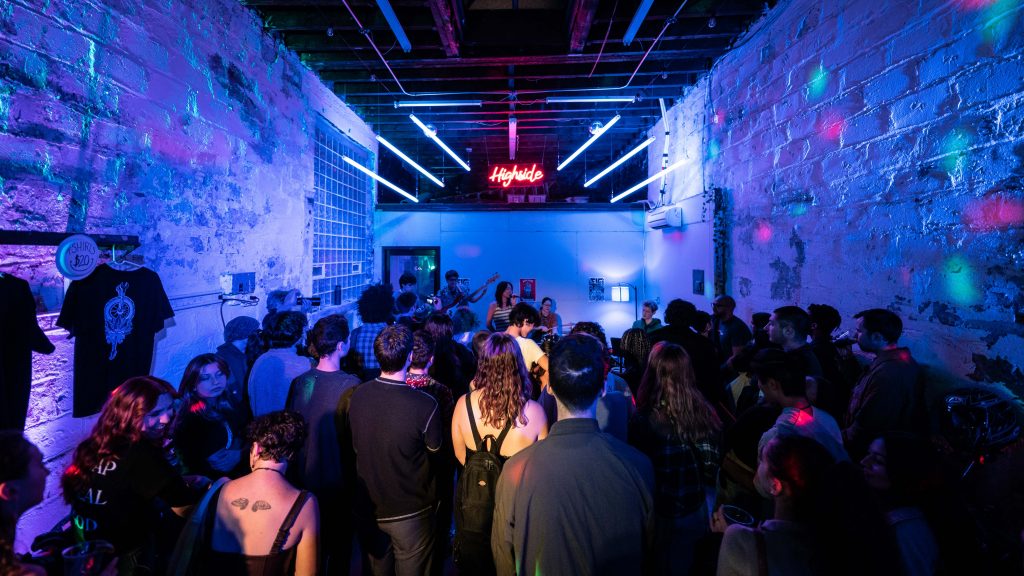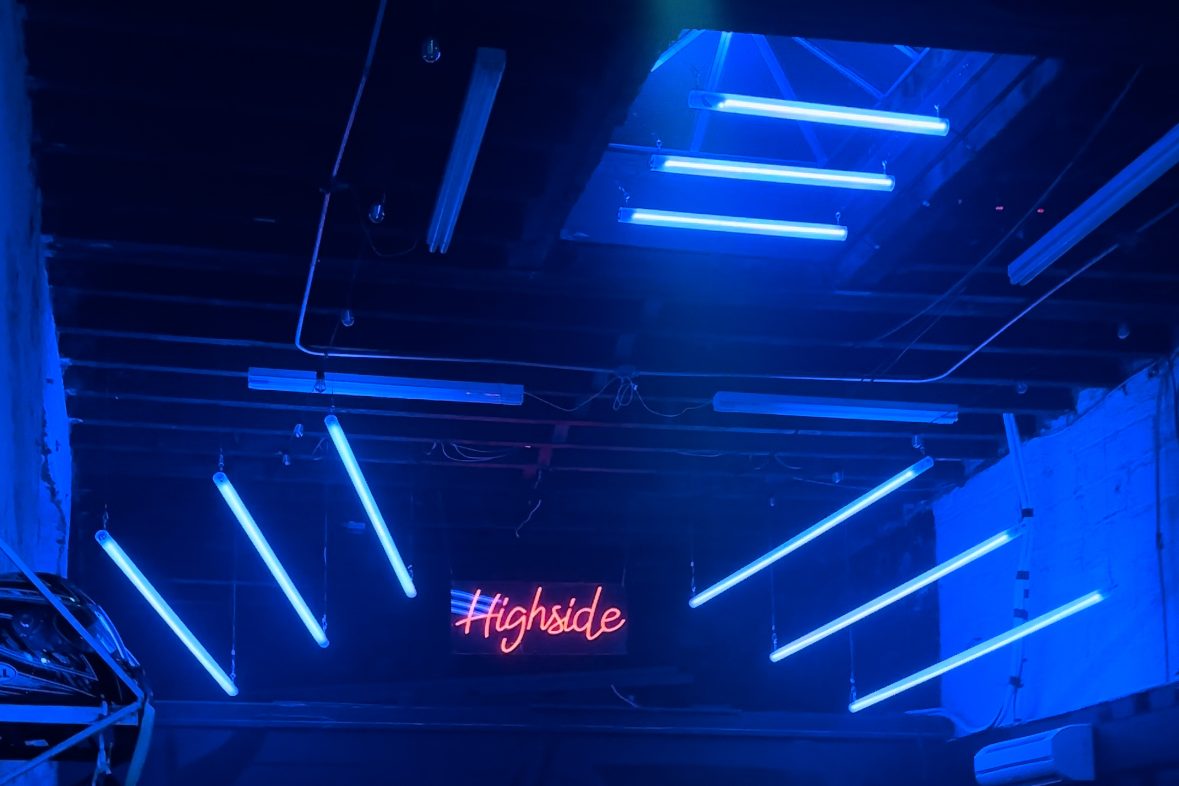Jesse began hosting concerts at the warehouse last summer. Jesse’s friend was interested in taking on a producing sort of role, and he lined up a few bands to play on a very hot July night. The one-off concert became a series in the fall, with Good Fridays occurring monthly in September, October, and November. Each event had three bands play, and was loosely curated around a genre: R&B, jazz, and punk, respectively.
I had been slowly working on the lighting in the space since May, but the start of this concert series changed the goalposts a bit. Originally the scope was just functional, workshop-type lighting. Now, we needed something more like concert lighting — or at least some color and maybe a distinctive look. To accomplish this, I unburied an idea of mine from college when I was doing lighting design for theater. In the spring of 2020 I was working on a senior production of Chicago with an ambitious group of students. The set design was a combination of jail and nightclub, and I wanted to create frosted color-changing tubes as a backdrop for the stage. As I began to obsess over this idea, the “tubes” became a sort of meme amongst me and my friends. But, covid came swiftly to cancel the show and the tubes; Jesse’s warehouse was the perfect place to bring the idea back to life.
Through September, I worked on creating the initial six tubes, using very similar designs to their Chicago counterparts. Each would be six feet long, 2 inches in diameter, frosted with spray paint, contain a double-length run of 4-color LED tape mounted on a metal rail with translucent cover, and have bolts and hooks on both ends for hanging and securing the pieces together. I was able to build them fairly quickly despite a few snags. After some input from Jesse we had them hung and on a test color-chase sequence for the concert at the end of September.

The goal had been to have the tubes DMX controllable, to use in conjunction with some cheap LED pars that had also been acquired for the space. But, the original 30-channel LED tape controller we purchased from Amazon turned out to be faulty — it caused the lights to flicker when connected to DMX input — and I didn’t figure this out until early December. With a replacement controller on the way, I got underway with a few upgrades for the big New Year’s Eve show that was approaching.
This show was planned to be 3 bands playing from 9pm to midnight followed by 2 DJs playing until late. Originally, an idea was floated to have the DJs play from the balcony — on the opposite end of the space from the existing tubes. So I started creating three additional, shorter tubes, each 3 feet long to hang in one of the skylights in the space. Those plans changed, though — everyone would be performing on the stage — and I installed the new tubes in the other skylight. This positioning was closer to the existing tubes and would allow them to play off each other. I also enlisted a friend to help hang and cable the LED pars, which included four mounted straight down above the dance floor.

In debugging the issues I had encountered so far, I had messed around a little bit with a few different free lighting control programs. But, when the (small) rig was fully functional (surprisedly without any notable problems) and it was time to actually program some looks for the show, I was notably unfamiliar with the software. All my programming experience had been on an ETC console and with a theater lighting mentality. For the warehouse, I decided on using QLC+ which was compatible with the Enttec open DMX dongle I had purchased. So, I sat down for a long programming session on the night before the show to get my hands dirty, get a grasp on the software, and figure out what looked good in the space.